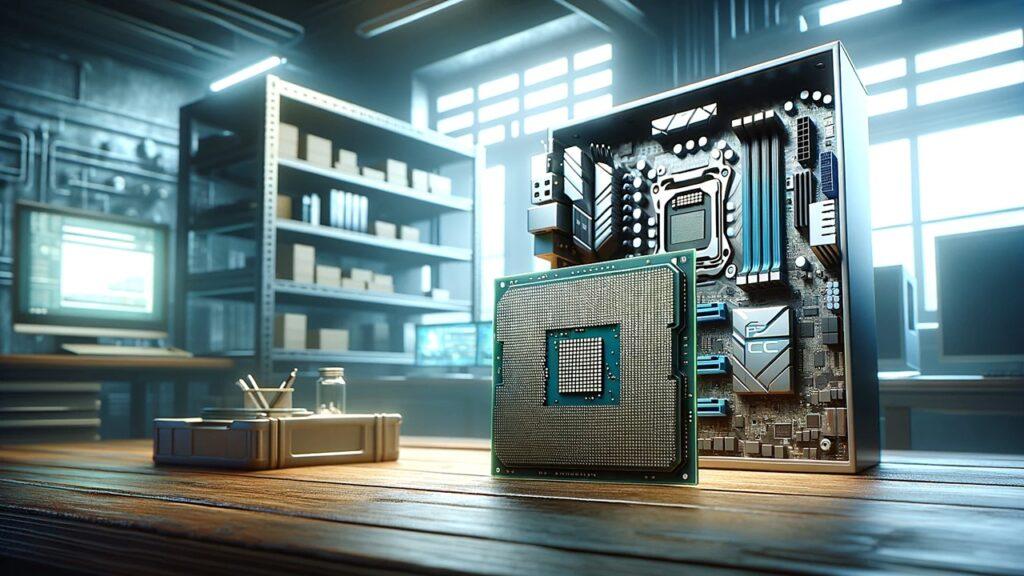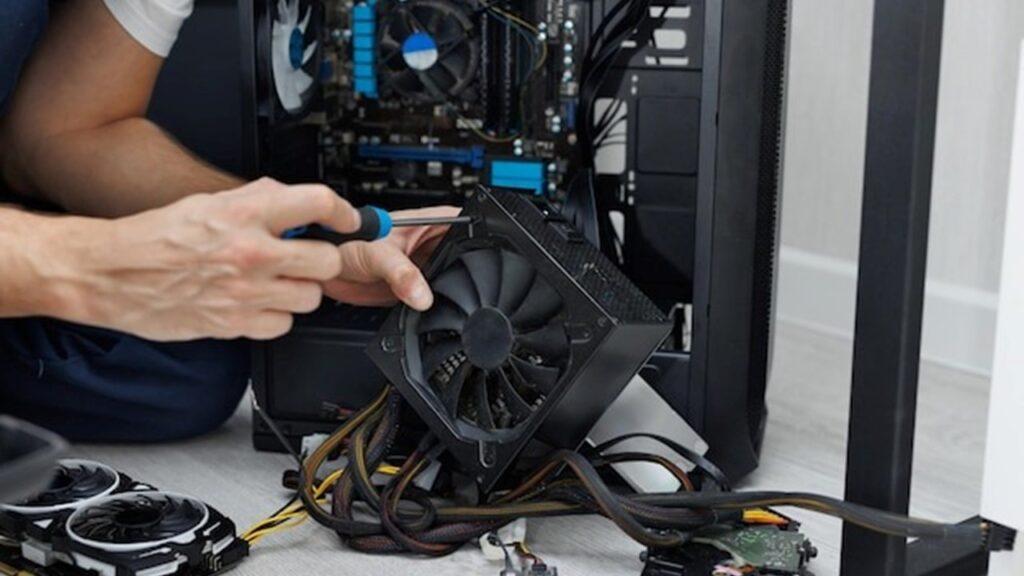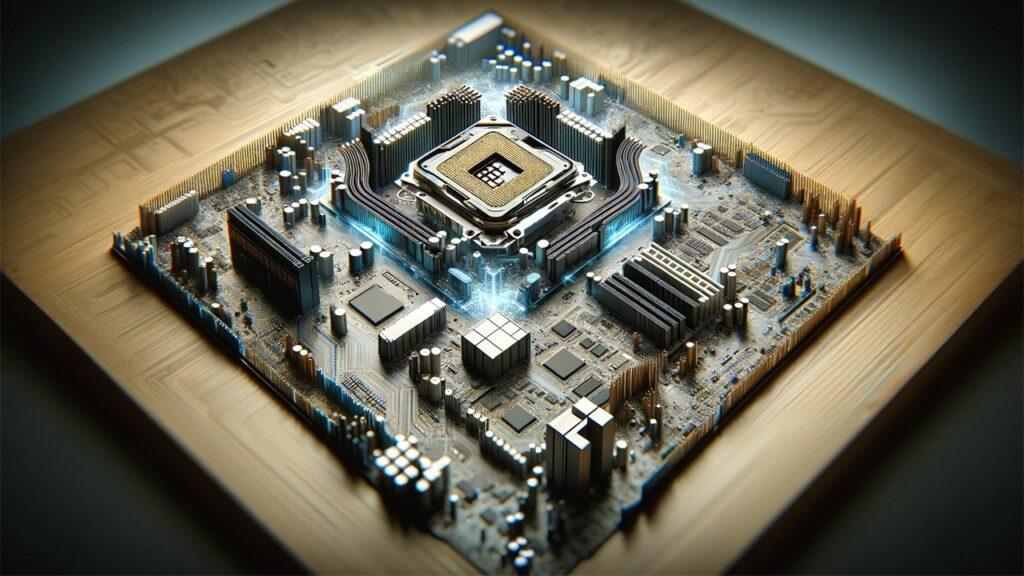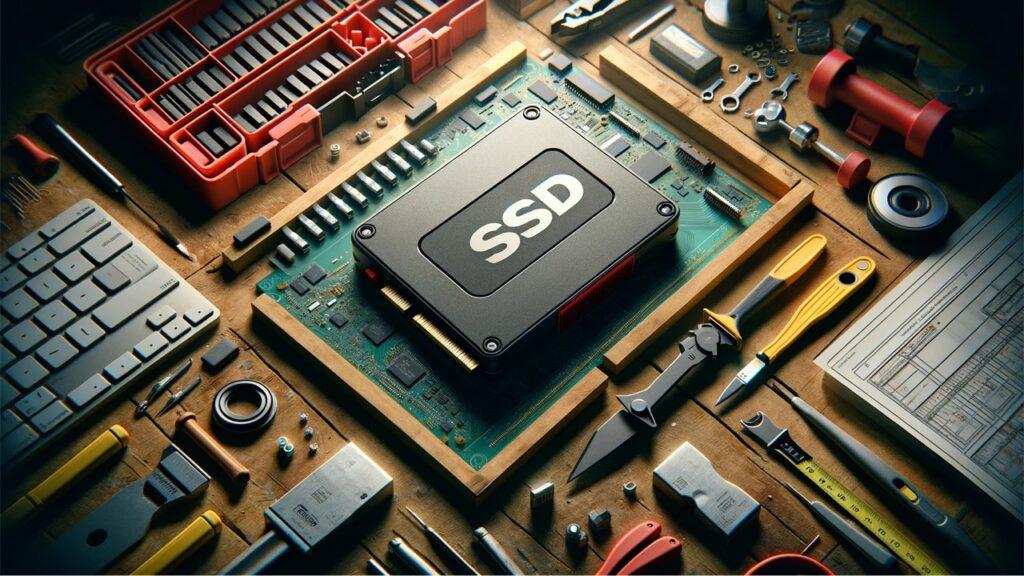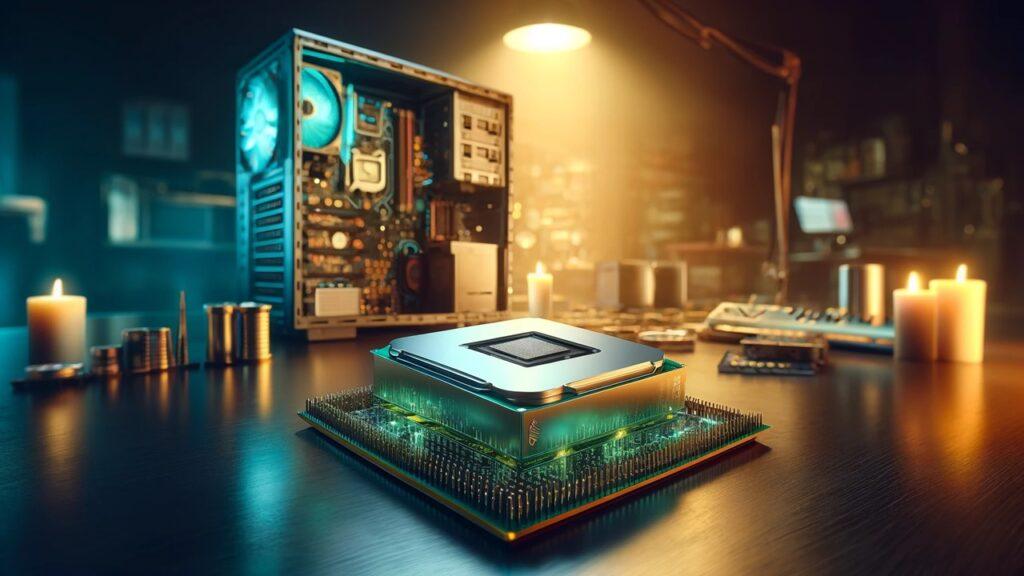
Imagine you’re working on an important project or gaming intensely when suddenly your device starts lagging, not quite keeping up with your pace. This frustrating slowdown could be due to CPU throttling—a clever yet often annoying mechanism where your computer’s brain, the CPU, deliberately slows down. Why does this happen? Primarily, it’s a protective move, aimed to prevent overheating and ensure your device lives to see another busy day without damage.
Understanding CPU throttling and its causes and solutions not only clears up why your tech might be underperforming but also arms you with knowledge to mitigate its impact. In this exploration, we’ll dive into the intricacies of why your CPU might be throttling unexpectedly and explore methods to optimize your system for peak performance. Furthermore, we’ll walk through practical solutions and preventative measures, so you can both comprehend and conquer this common tech hiccup, enhancing your device’s performance and extending its lifespan.
What is CPU Throttling?
Imagine this scenario: You’re deeply immersed in a crucial game or running an essential software application, and suddenly, your device starts experiencing lags. This frustrating slowdown often stems from CPU throttling. But what does CPU throttling entail? Essentially, it’s when your computer’s central processing unit (CPU) intentionally decreases its speed to prevent overheating or to conserve power. Think of it as your device taking a strategic pause to avoid overheating or excessive battery drain.
CPU throttling serves as a protective measure within computing systems. When your CPU is under heavy load, it generates significant heat. To maintain safe operating temperatures and prevent potential damage, the system adjusts the processor’s speed downward. This adjustment strikes a balance between performance and hardware longevity. Additionally, CPU throttling can be initiated by specific software or firmware configurations aimed at managing power consumption, particularly in laptops and mobile devices where battery life is a critical concern.
Common scenarios for CPU throttling include intense gaming sessions, running multiple heavy applications simultaneously, or when your device is exposed to high ambient temperatures. Moreover, if your cooling system isn’t up to the task, you might experience throttling more frequently. By understanding CPU throttling and its causes and solutions, you can take steps to mitigate its impact, ensuring smoother performance and longer device longevity.
Why Does CPU Throttling Occur?
Understanding CPU throttling and its causes and solutions is crucial for anyone looking to maintain optimal device performance. But why does CPU throttling occur in the first place? Let’s dive into the primary reasons: overheating, power management, and system preservation.
Overheating Issues
Excessive heat is a primary trigger for CPU throttling. When your CPU gets too hot, it automatically reduces its speed to cool down. This self-regulation prevents permanent damage that excessive heat can cause to the delicate electronic components.
Effective cooling systems play a vital role here. High-quality budget CPU air coolers or advanced AIO liquid coolers for high performance gaming can significantly help in managing your CPU’s temperature. By investing in good cooling solutions, you can minimize the risk of overheating and thus, reduce the chances of throttling.
Power Management
The relationship between CPU performance and power consumption is another critical factor. When a device operates on battery power, especially in laptops and mobile devices, it often prioritizes conserving energy over maximizing performance.
This is where CPU throttling steps in, reducing the processor’s speed to extend battery life. This balance ensures that your device lasts longer between charges, although it might sacrifice some performance in the process. Battery life considerations are paramount in portable devices, making CPU throttling a necessary compromise.
System Preservation
CPU throttling also plays a role in system preservation. By throttling the CPU speed, the system can prevent hardware damage that could result from prolonged high-performance usage. This not only helps in maintaining the health of the device but also extends its overall lifespan. Moreover, by keeping the internal temperatures in check, CPU throttling helps in maintaining the efficiency of other components, such as the motherboard and RAM.
Understanding CPU throttling and its causes and solutions is essential for anyone who relies heavily on their computing devices. Whether it’s due to overheating, power management, or system preservation, CPU throttling serves as a crucial mechanism to protect your device. By addressing these issues through better cooling solutions, power management settings, and regular maintenance, you can ensure smoother performance and prolong the life of your device. So, next time you experience a slowdown, you’ll know exactly what’s happening and how to deal with it.
Common Signs of CPU Throttling
Have you ever wondered if your CPU is throttling? Knowing the signs can save you from unexpected performance drops at crucial times. Common symptoms of CPU throttling include noticeable slowdowns in system performance, especially during tasks that were previously fast and seamless. You might also hear your device’s fans spinning faster and louder as it tries to cool down the overheated CPU.
Another telltale sign is uneven performance where the speed of your computer fluctuates wildly without any apparent reason. This could be particularly evident when running high-demand applications or games.
To effectively monitor CPU performance and detect throttling, you can use task managers or system monitors that show CPU speed and temperature in real-time. Watching these metrics during different operations will help you spot if the CPU speed dips significantly below its base level, which is a strong indicator of throttling.
Diagnosing CPU Throttling Issues
Once you suspect CPU throttling, the next step is to diagnose the issue accurately. Proper diagnosis involves using both built-in system tools and third-party software solutions. This comprehensive approach ensures you cover all bases and get a clear understanding of what’s happening with your CPU.
Using Built-in System Tools
Built-in system tools are a great starting point for diagnosing CPU throttling. For Windows users, Task Manager is an essential tool. To access it, press Ctrl + Shift + Esc. Once open, navigate to the Performance tab. Here, you can monitor CPU usage, speed, and temperature. A significant drop in CPU speed during high-demand tasks often indicates throttling. Additionally, checking the temperature readings can confirm if overheating is causing the slowdown.
For macOS users, Activity Monitor serves a similar purpose. You can find it in the Utilities folder within the Applications directory. Once open, the CPU tab shows usage and thermal state. Look for high CPU temperatures and reduced performance under heavy load, which are signs of throttling.
Step-by-step guide for Windows:
- Open Task Manager with Ctrl + Shift + Esc.
- Navigate to the Performance tab.
- Observe the CPU speed and temperature.
- Look for drops in speed during heavy usage and high temperature readings.
Step-by-step guide for macOS:
- Open Activity Monitor from the Utilities folder.
- Go to the CPU tab.
- Monitor the CPU usage and temperature.
- Identify performance drops and high temperatures.
Third-Party Software Solutions
While built-in tools provide a basic overview, third-party software offers more detailed insights. Programs like HWMonitor, ThrottleStop, and MSI Afterburner are highly recommended. These tools provide comprehensive data on CPU health, including temperature, clock speed, and usage patterns.
HWMonitor, for instance, displays detailed temperature readings and power consumption metrics. This information helps pinpoint exactly when and why your CPU is throttling. ThrottleStop is another excellent tool, especially for advanced users. It allows you to tweak CPU settings and disable certain throttling mechanisms, giving you more control over your system’s performance.
MSI Afterburner is particularly useful for gamers and those using high-end graphics cards. It not only monitors CPU performance but also tracks GPU health, offering a holistic view of your system’s thermal and power dynamics. By using these tools, you can diagnose and address throttling issues more effectively.
HWMonitor:
- Download and install HWMonitor.
- Open the program and observe the temperature and power consumption readings.
- Identify any abnormal spikes or drops during high-demand tasks.
ThrottleStop:
- Download and install ThrottleStop.
- Open the program and navigate through the settings.
- Adjust the throttling settings to optimize performance.
- Monitor the changes in CPU performance and temperature.
MSI Afterburner:
- Download and install MSI Afterburner.
- Open the program and navigate to the monitoring tab.
- Observe both CPU and GPU metrics.
- Identify any signs of throttling and adjust settings accordingly.
Understanding CPU throttling and its causes and solutions is key to maintaining a smooth and efficient computing experience. By recognizing common signs like sudden performance drops and excessive heat, and by using both built-in system tools and third-party software, you can accurately diagnose and address CPU throttling. This proactive approach not only enhances your device’s performance but also extends its lifespan, ensuring that your system stays reliable and efficient.
Solutions to Prevent and Fix CPU Throttling
Dealing with CPU throttling can feel like hitting an unexpected roadblock just when you need your computer to zoom along without hiccups. Fortunately, there are some smart fixes and preventative measures you can take to keep things running smoothly. Whether it’s beefing up your cooling system, tweaking power settings, or upgrading your hardware, let’s dive into how you can sidestep CPU throttling and maintain peak performance.
Enhancing Cooling Systems
A top-notch cooling system can be a game changer in preventing CPU throttling. Start simple: check if your PC’s airflow is optimized. Adding or upgrading fans in your computer’s case can propel more air around the hotter components, particularly the CPU.
If you’re frequently pushing your system to its limits, consider a specialized CPU cooler. Air coolers are great for most, but if you’re into heavy-duty gaming or video editing, a liquid cooling system might be your best bet. These systems are ace at drawing heat away from your CPU to keep it cool under pressure.
Keeping these systems clean and well-maintained is key. Dust off the internals now and then, and check that the thermal paste hasn’t dried out. Fresh paste can significantly enhance the effectiveness of your cooling setup by improving heat transfer from the CPU to the cooler.
Optimizing Power Settings
Tinkering with your power settings can also provide relief from throttling. Dive into the control panel on your PC, and you’ll find options to adjust how your system manages power. Opting for a ‘High Performance’ setting could prevent your CPU from dialing back too much under load. Keep in mind, though, this might draw more power and generate extra heat.
For more granular control, especially on laptops where battery life is a concern, adjust the processor state settings. Setting these closer together can keep your CPU from scaling down too drastically. Features like Intel’s SpeedStep or AMD’s Cool’n’Quiet can also help by adjusting the CPU’s performance to meet the demands of what you’re running without going overboard.
Hardware Upgrades
Sometimes the best fix is a hardware upgrade. If your CPU keeps hitting the thermal throttle, maybe it’s time for a cooler that can keep up. A better case can also help, one with improved airflow and more room for bigger, better fans.
And it’s not just about the cooling—upgrading your storage to an SSD, for example, can lighten the load on your CPU, reducing heat output. Faster RAM can do wonders too, speeding up processes and taking some of the burdens off your CPU.
For the power users out there, consider a beefier power supply. More stable power can prevent your CPU from throttling under load, especially if you’re overclocking or running high-demand applications and games.
Navigating through the quirks of CPU throttling doesn’t have to be a tech nightmare. With the right cooling solutions, adjusted power settings, and strategic hardware upgrades, you can keep your system running cool and fast. Each step not only helps tackle CPU throttling but also boosts the overall performance and longevity of your computer. So roll up your sleeves, and give your PC the tune-up it deserves!
Long-term Strategies to Manage CPU Throttling
In the long haul, managing CPU throttling is all about commitment to regular maintenance and smart, sustainable usage of your device. It’s not just about quick fixes; it’s about setting up routines that keep your computer in top form and your CPU running smoothly.
Regular system updates are a must. They often include vital performance improvements and fixes that could optimize how your CPU handles intense tasks. Keeping your software up to date means your system can take advantage of the latest optimizations and security enhancements, which in turn can help manage CPU load more efficiently.
Apart from updates, keeping your system clean—both physically and digitally—is crucial. Dust buildup can choke your cooling systems, and unnecessary software can clog your CPU’s bandwidth. Schedule regular clean-ups, clear out your computer’s internals, and declutter your software environment. This not only helps in heat management but also ensures that your CPU has fewer background tasks to deal with.
Sustainable usage also means being mindful of how hard you push your hardware. Avoid running high-intensity programs for prolonged periods. When not in use, dial back on settings or shut down unnecessary applications to give your CPU a breather. Balancing the workload can prevent your system from hitting high temperatures that trigger throttling.
Wrapping It Up!
As we’ve navigated through the complexities of CPU throttling, its causes, and solutions, one thing is clear: understanding CPU throttling and its causes and solutions is pivotal for anyone looking to maintain optimal performance of their computing devices.
From enhancing your cooling systems to optimizing your power settings and considering hardware upgrades, the steps are many but manageable. Regular maintenance and updates, along with mindful usage, play a crucial role in keeping your CPU running efficiently.
As technology evolves, so do the strategies to manage CPU performance. The ongoing advancements in computing mean that we can expect continuous improvements in how devices handle CPU throttling. Staying informed and proactive are your best defenses against unexpected slowdowns.
Remember, a well-maintained device is not just about preventing problems like CPU throttling; it’s about ensuring that your system remains robust and reliable over its lifespan. So, take the time to understand your computer’s needs and treat it well—it’s an investment that pays off in smooth, efficient performance day in and day out.
Related FAQs
What Triggers CPU Throttling Besides Overheating?
CPU throttling can also be triggered by inadequate power supply and system firmware settings designed to conserve energy.
Can CPU Throttling Affect the Lifespan of My Device?
Yes, frequent CPU throttling can indicate underlying issues that, if unaddressed, might shorten the lifespan of your device by causing undue wear and tear.
Is There a Way to Permanently Disable CPU Throttling?
Permanently disabling CPU throttling is not recommended as it prevents the CPU from protecting itself against potential overheating and damage.
How Often Should I Check for Updates to Prevent CPU Throttling?
It’s advisable to check for system and software updates at least once a month to ensure all components are functioning optimally to prevent unnecessary throttling.
What Are the Signs That Throttling is Damaging My CPU?
Signs include consistent performance degradation, frequent system crashes, and unusual sounds from the cooling system indicating it’s struggling to maintain optimal temperatures.

Josh is a lifelong tech enthusiast with a passion for building powerful, reliable PCs. With years of hands-on experience, he shares practical advice to help readers make smarter choices, whether it’s picking the right components or solving build issues at home. Josh focuses on what really matters in real-world use, offering honest insights that come from testing, tinkering, and learning along the way. He’s here to make tech feel a little less overwhelming and a lot more useful.



